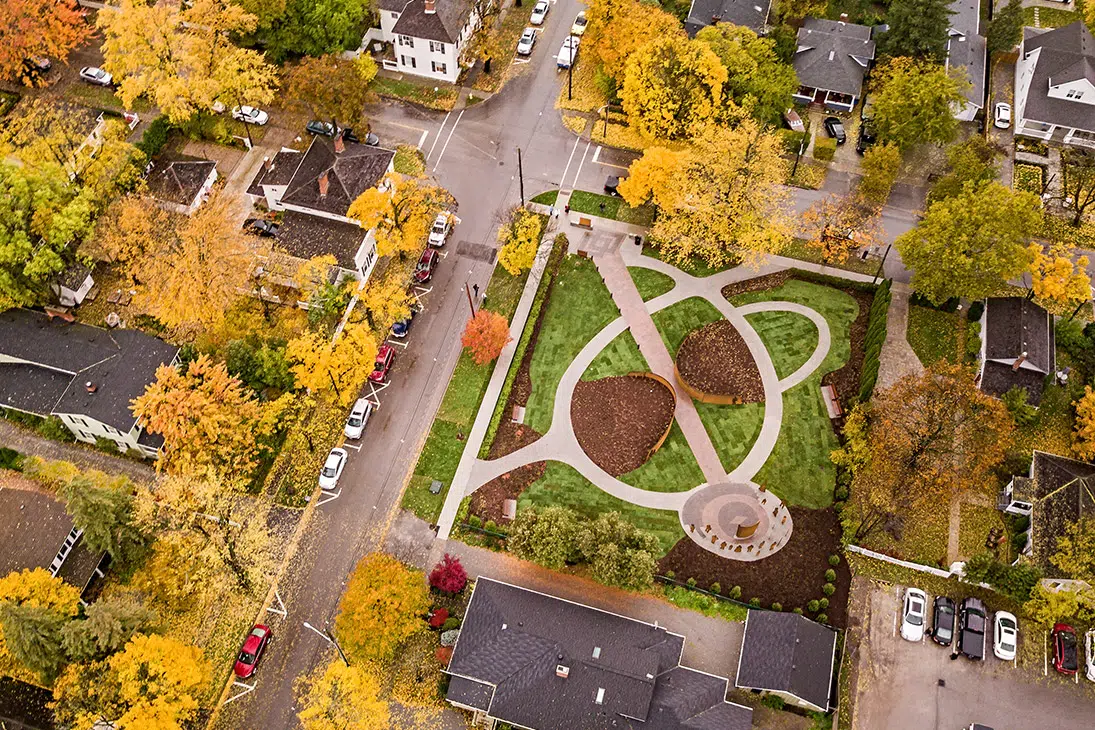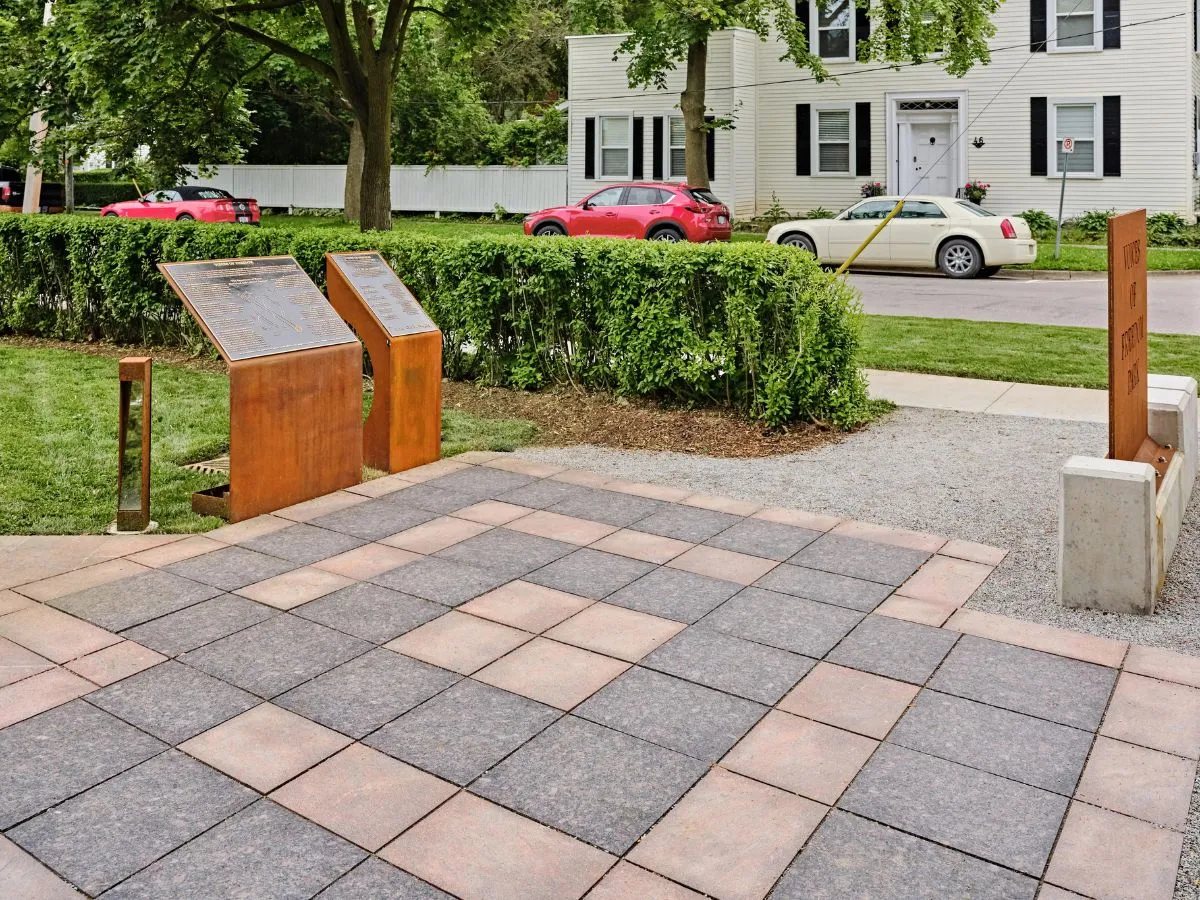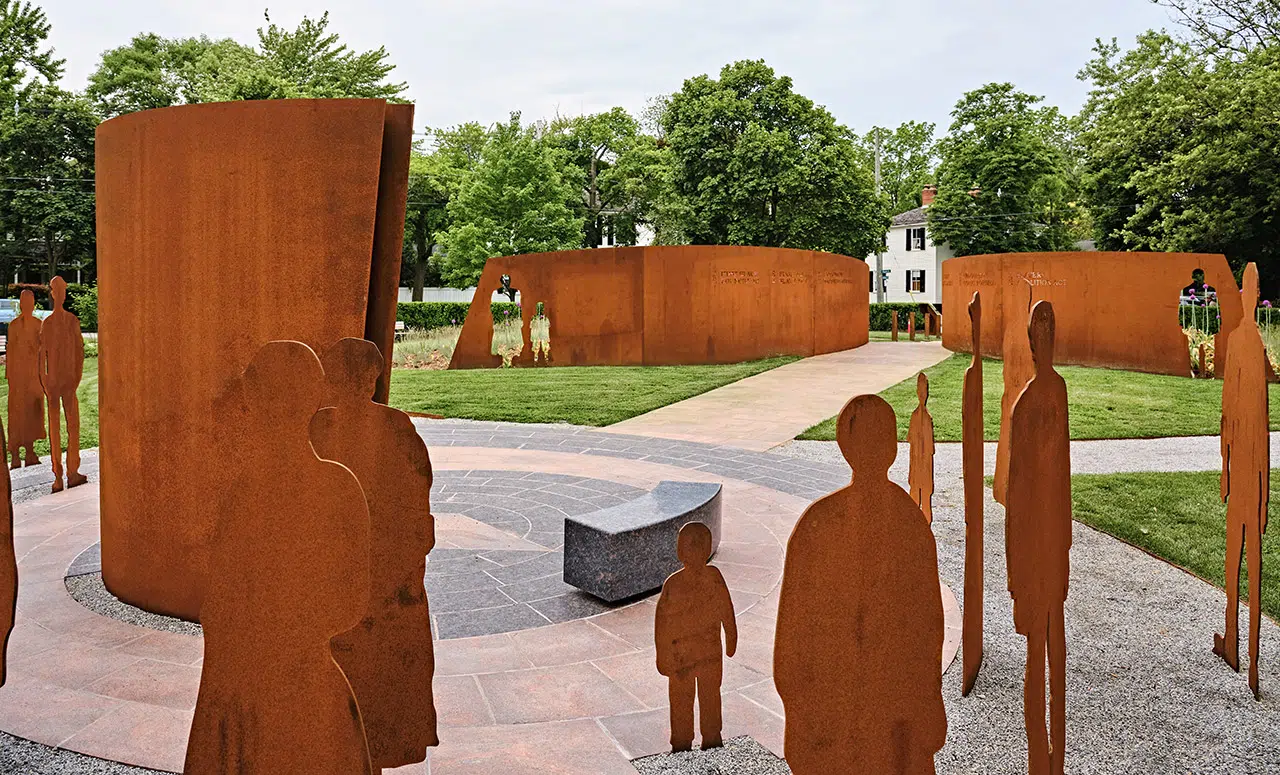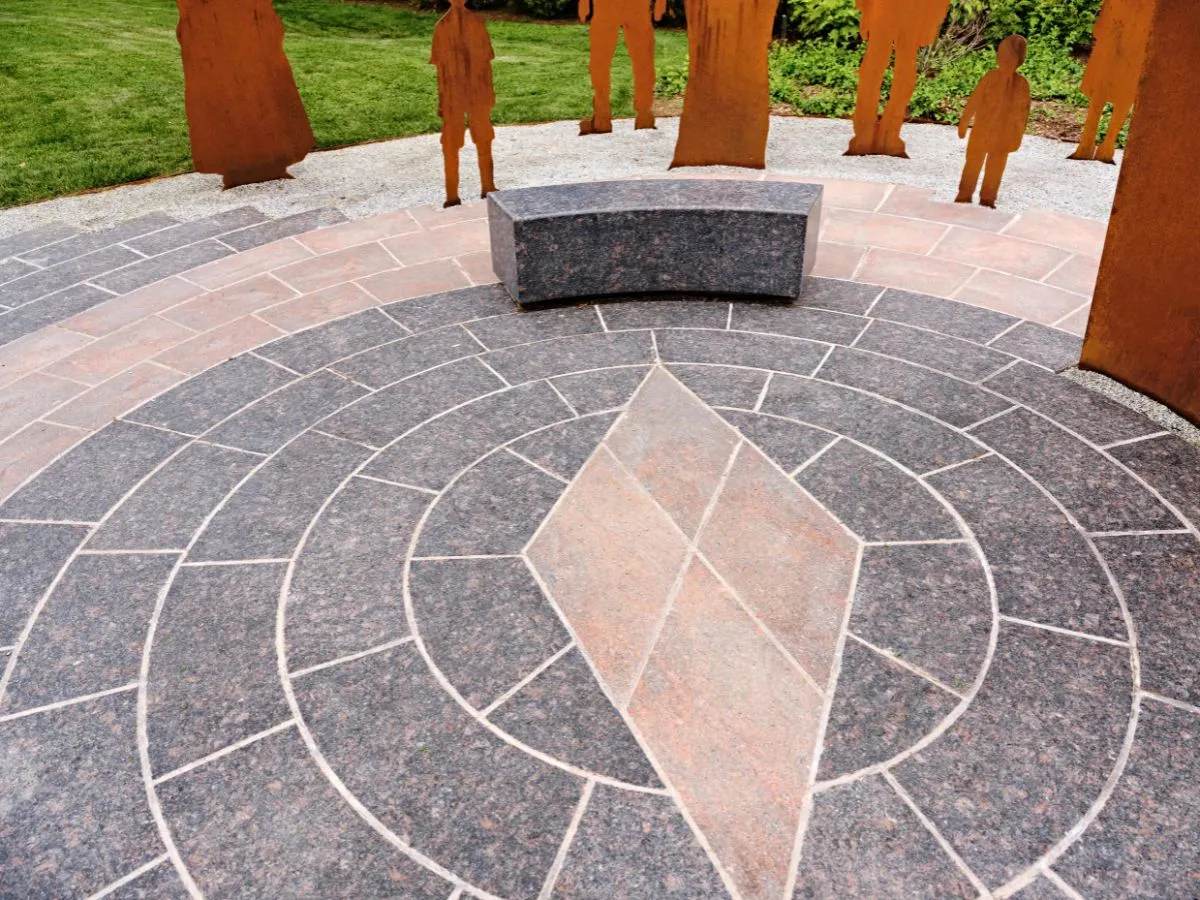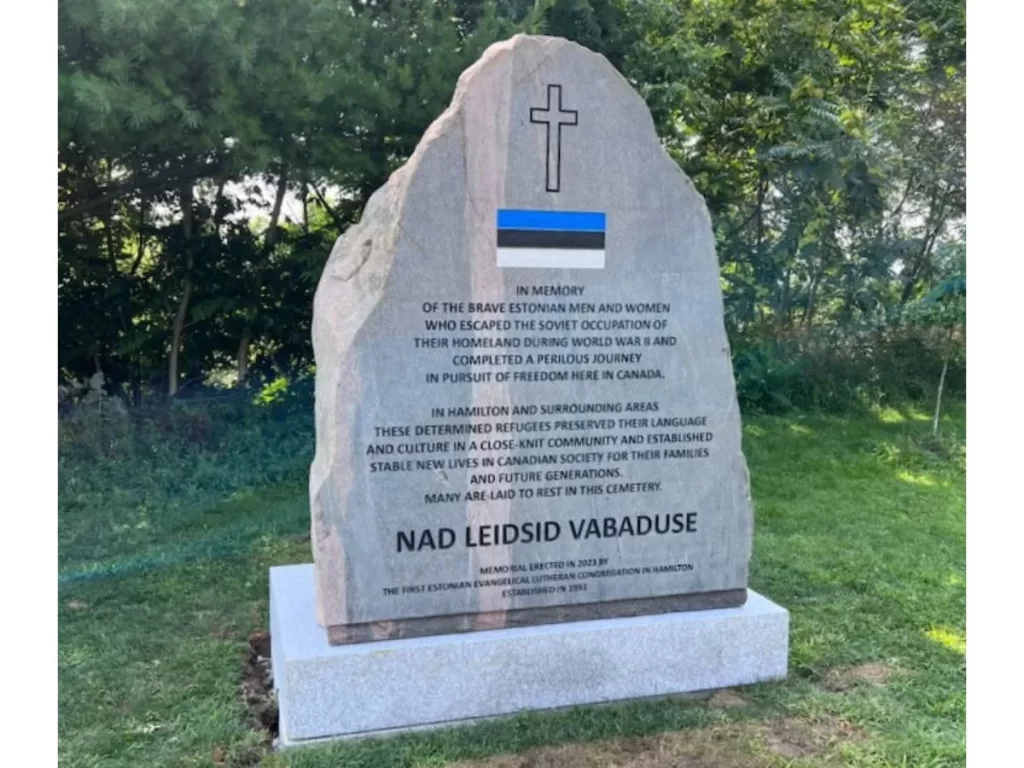At HGH Granite, we believe in the power of art and craftsmanship to celebrate and honour the rich tapestry of cultures that shape our communities here in Canada. And as we mark the beginning of Black History Month, we’re looking back at our contribution to the Voices of Freedom monument, an experiential art installation in Niagara-on-the-Falls, Canada, which stands as a powerful testament to the resilience and contributions of Black Canadians.
The historical context of the Voices of Freedom installation
The installation is nestled in a small area of parkland in the heart of Niagara-on-the-Lake’s historic Old Town, and weaves together symbols from West African heritage and the Underground Railroad.
Niagara-on-the-Lake, which was the capital of Upper Canada from 1792 to 1796, has been home to Black residents since the 1780s. It’s also where the first anti-slavery legislation was introduced in the British Empire.
In the 1780s, after the American Revolution, United Empire Loyalists settled in the area and many brought with them the African people they’d enslaved. Meanwhile, Black Loyalists who’d fought in “Butler’s Rangers” – a unit of the American Revolutionary War, led by John Butler – also moved here, having acquired land and freedom. And so there were two classes of Black people living in the province: those who were enslaved and those who were free.
Slaves outnumbered the free, until the early 1800s, however, when freedom-seekers migrated into the area. In 1807 the Slave Trade Act outlawed the slave trade in the British Empire. This was followed by the Slavery Abolition Act of 1833 which outlawed slavery altogether. Even after this, however, racism and discrimination were a daily reality for many Black people, and the path to becoming truly “free” and equal was a long and challenging one.
Partnering with landscape architects Fleisher Ridout Partnership
For the visionary landscape architect and artist, Tom Ridout, of Fleisher Ridout Partnership, the concept of struggle, journey, dialogue and coming together as a community were central themes and components of his work.
The idea was to move away from a traditional static memorial and towards an immersive installation – one that combines sculptural art with park design – and which allows visitors to engage with and be educated on Black History in a more experiential way.
Let’s take a look in more detail…
Key features of the Voices of Freedom installation
At the park’s entrance is a granite paved area featuring a significant ‘Epa’ design. Epa is the West African interpretation of handcuffs. The handcuffs here representing the idea of both the Transatlantic Slave Trade’s enslavement of Black people and their ongoing journey to justice and true freedom.
The main granite pathway, sourced and supplied by HGH, represents the people enslaved in Niagara-on-the-Lake and the journey north of the others escaping slavery in the US. The path guides visitors through visually and physically striking steel figures and forms.
The opposing steel arcs at the centre of the park represent the struggles and barriers to freedom of the slaves. Important names and dates from history are inscribed on the walls while figures cut into the steel walls signify the diversity of Black voices.
The communal circle and wall in the top left corner of the park represent the journey’s end – a symbol of unity, kinship, support and community. The North Star design meanwhile represents a beacon of light that led the enslaved people to Canada and, eventually, freedom. As visitors move through the space, which also features inspiring quotes, they’re invited to not only reflect on the Black voices of Canada’s past but also to look forward and listen to the voices shaping Canada’s future.
HGH’s role in the project
We provided Tan Brown and Multicolour Red granite for the paths, paved areas and boulders – but while we were honoured to source the stone, being part of this project meant more than supplying materials.
It was about playing a role in the artist’s vision of taking people on a journey of awareness and appreciation, giving people a deeper understanding of the lives and experiences of the Black men, women, and children who endured slavery and found freedom.
For us, every project is an opportunity to contribute to the vibrant narratives that shape our communities, but working on Voices of Freedom was particularly special. We love that we helped in the creation of a monument that will tell Black Canadians’ story of strength, resilience, and unity for many, many years to come.
Other projects that pay tribute to Canada’s diverse communities
The Landscape of Nations, Tom Ridout
Another work from Tom Ridout, the Landscape of Nations memorial stands as an immersive tribute to the contributions and sacrifices made by Six Nations and Native Allies on Queenston Heights during the War of 1812.
Maanjidowin (The Gathering), David M General
This 16-foot granite and bronze sculpture by Indigenous artist David M General, which sits at Billy Bishop Toronto City Airport, was created in recognition of the Mississaugas of the Credit First Nation and their relationship to the land, air and water.
Estonian & Ukrainian Memorials
The boulder memorial for the Estonian Central Council of Canada community remembers the brave men and women who fled Estonia during WWII to find freedom in Canada.
The black granite Ukranian monument, featuring 24ct gold leaf, can be found at the St. Wolodymyr & St. Olha Cemetery, Oshawa, ON. It was donated by the Dnipro Oshawa Fund, in memory of the members of the Ukrainian Cultural Centre Dnipro.
Honouring history
How can we help you with any special projects you’re working on? Get in touch with our team today.
